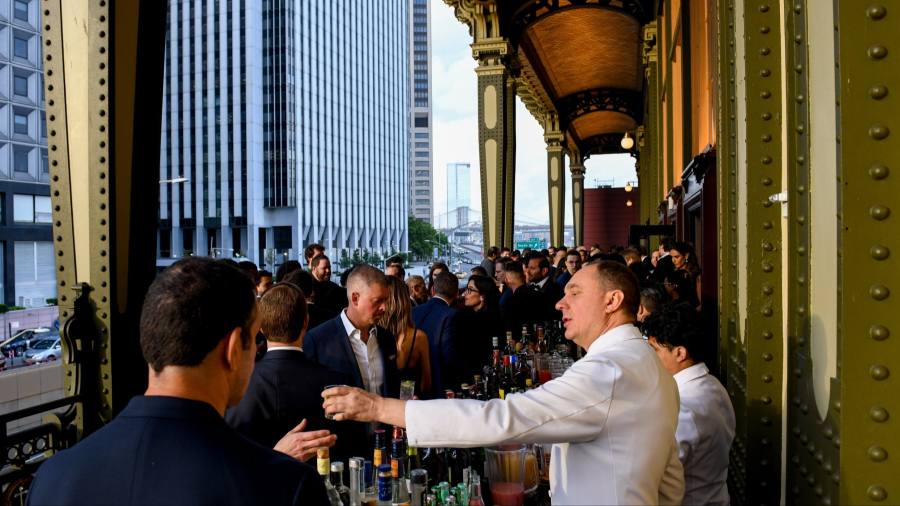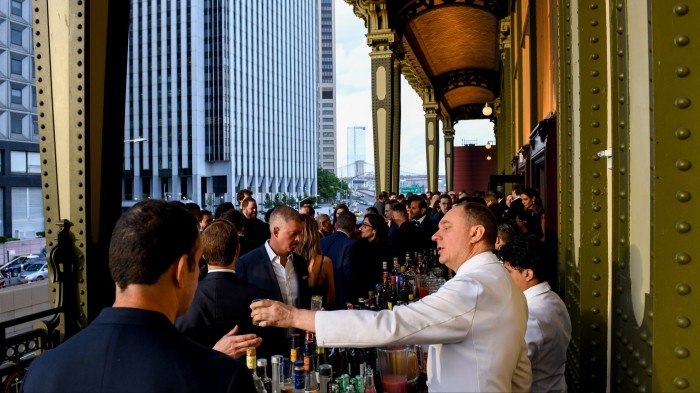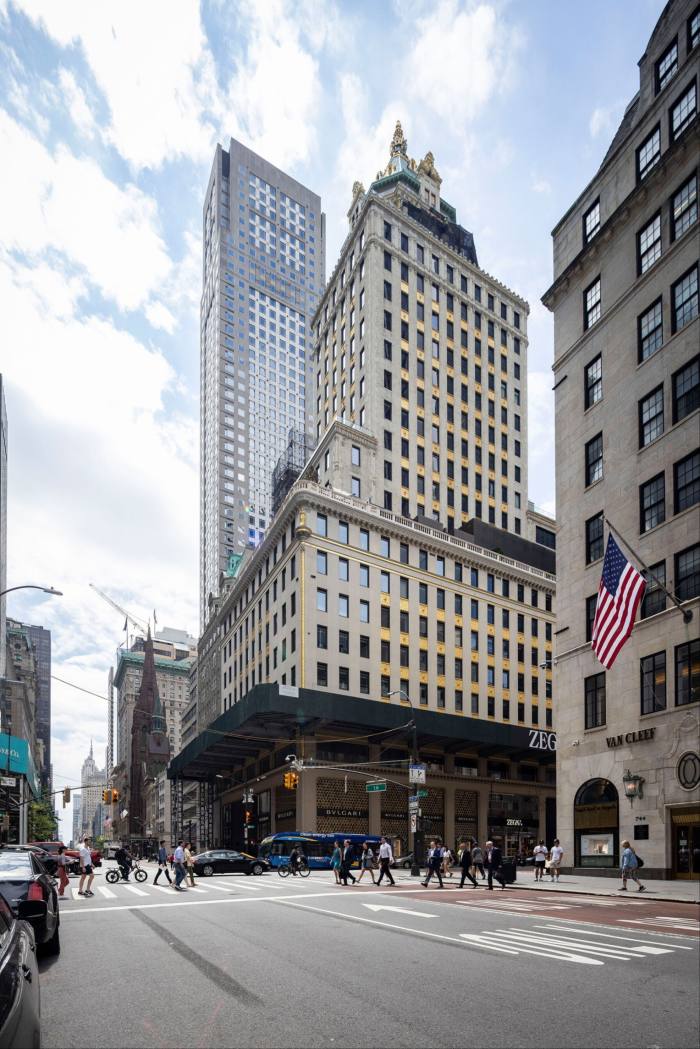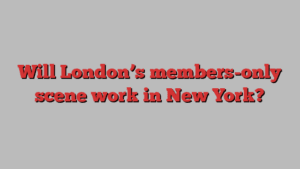

Those lucky enough to set foot on the rooftop terrace of the Core Club’s new Manhattan headquarters may experience the thrilling illusion of being able to reach across Fifth Avenue and touch the Crown Building’s gilded tower.
That seems fitting since Core and other members of New York City’s modern day private club scene are, in fact, Gilded Age descendants. Just now, they’re thriving.
A brief, and unscientific, taxonomy: for downtown cool — and a possible late-night brush with a Kardashian or Mayor Eric Adams — there is Zero Bond, which one observer called “a nightclub with a membership overlay.” Casa Cipriani has taken over a restored Beaux Arts ferry terminal at the South Street Seaport, bringing together “an eclectic community who share life’s simple pleasures” — like being rich. Carbone, the New York restaurant group that has made a splash in Miami, is preparing to open a private club at Hudson Yards, which is, itself, a sort of luxury club walled off from the rest of the city. San Vicente Bungalows, the Hollywood private club, is also on the way.
Then there are Aman and Casa Cruz, which are duelling for the title of Manhattan’s most ostentatiously expensive private haunts. At Aman, an offshoot of the $1,950-a-night-minimum hotel that recently opened at the Crown Building, membership is reportedly $200,000 upfront, and then $15,000 annually. The velvety Casa Cruz, a London expat that last year took up residence on 61st Street, begins at $250,000. (Technically, Cruz is not a private club but a restaurant with special privileges for “partners”.)
All these follow in the slipstream of Soho House, which now counts 20 years in New York. Last year it opened The Ned NoMad, which apparently is not opposed to creativity but is not as explicitly geared to members from the creative industries as the mother ship. Core also traces its provenance to the Bloomberg era. It is refreshing itself by moving to a new four-floor home that is thrice the size of the Midtown original and offers everything from a test kitchen and screening rooms to a “longevity” centre that promises to refresh members’ skin by 10 years.
“It’s sort of the industry du jour,” said Jennie Enterprise, the club’s founder.
The aptly named Enterprise insists Core is not about “sameness” but, rather, creating an arena for “curiosity and challenging perspectives.” She and her staff scour the globe for stimulating new members to “oxygenate” the place. “Is there someone in Croatia who’s doing something interesting?” she asks.
Not everyone is a fan. Mitchell Moss, the New York University urbanist, views the new clubs as byproducts of an era of historically low interest rates, and views them as antithetical to the city’s free-spirited nightlife. “Fundamentally, there is too much wealth in New York City so joining a club is an easy, mindless way to park money in hopes of enhancing your nightlife,” Moss bristled.

But others see quintessentially New York traits in the newcomers. A real estate tycoon told me he recently accepted a business meeting because it was at the Aman, and he was curious to step behind the velvet rope. “New York loves exclusivity,” he confessed.
My own recent experience at the Aman was not terribly exciting. After passing the usual phalanx of stylish receptionists, a guest and I sipped coffee in what could have been confused with any number of boutique hotel lounges while a middle-aged man sat at a nearby table, pecking at his laptop. Casa Cipriani, on the other hand, had a tigerish atmosphere of older men and younger women. The food was exceptional.
The city’s first private clubs were 19th-century creations inspired by posh London forerunners. They represented a self-conscious desire to join like with like. Or, as James W Alexander wrote in his history of the University Club, of which he was president from 1891 to 1899: “The existence of the University Club in the city of New York is due to the proclivity of birds of a feather to flock together.” (Alexander apparently had strong feelings about the club: His “partial” history spans more than 600 pages.)
As with religions, clubs tend to beget more clubs. The Knickerbocker, for example, was founded in 1871 by disenchanted Union Club members. JP Morgan broke away in 1891 to open the Metropolitan Club further uptown. After the first world war membership began to wane but clubs limped along.
It is impossible to separate the newest crops from the Covid pandemic. As restaurants, nightclubs, spinning studios — and any other place a New Yorker might find human contact — shuttered, private clubs emerged as a kind of social refuge. Their exclusivity offered at least an illusion of safety from the frightening city beyond their walls. The pandemic is now past, but clubs seem to suit the newly flexible, remote-working world it left behind.
“They’re a weird Frankenstein of how people are living their lives,” Jolie Hunt, the publicist and gal about town, observed. At a single club, she can take a meeting, take a spa treatment, or have a night out. It is a space in the city’s social market somewhere between the randomness of a Starbucks and the fustiness of the old establishment clubs, she argued. They are also (mostly) free from the prying eyes of social media.
On a recent evening, Hunt strolled into Zero Bond and was taken aback by the action: “I was like, ‘Wow! There’s a whole world going on in here.’”
Around the same time, another clubbable friend was in Brooklyn and stumbled upon the raucous Giglio feast. It is an annual Italian-American celebration, in the Williamsburg neighbourhood. “It was incredible — the masses in the street, the collection of characters, every type of person under the sun,” he marvelled. “It was just an incredible New York scene and moment.”
Evidently, there is still life in this multitudinous city outside its private clubs.
Find out about our latest stories first — follow @ftweekend

